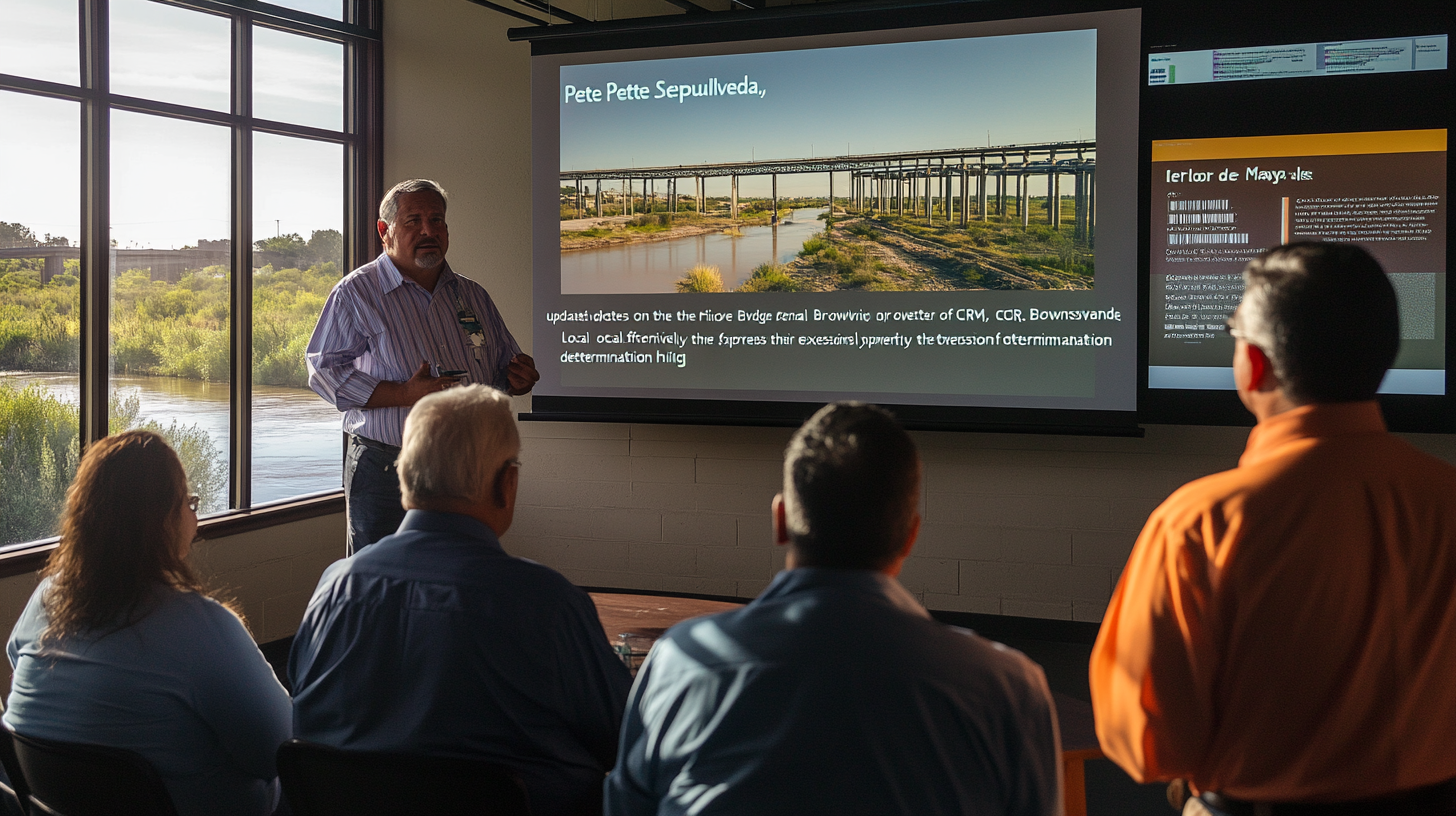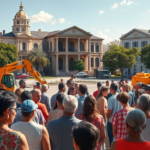Sepulveda Provides Crucial Update on Flor de Mayo International Bridge Project
A significant infrastructural advancement is taking shape for the Rio Grande Valley community, as Executive Director Pete Sepulveda of the Cameron County Regional Mobility Authority (CCRMA) updates stakeholders on the Flor de Mayo International Bridge Project. During a meeting held by the South Texas Manufacturer’s Association in Brownsville, Texas, Sepulveda laid out the path forward for this long-anticipated crossing, aimed at improving regional connectivity.
Project Overview and Progress
The Flor de Mayo International Bridge is strategically proposed for west Brownsville. Located eight river miles upstream from the privately-owned Brownsville and Matamoros International Bridge and 35.6 miles downstream from the county-owned Free Trade Bridge at Los Indios, this new project is positioned to ease traffic congestion significantly by providing a dedicated passage for passenger vehicles and pedestrians.
Receiving a presidential permit in May 2024, stakeholders are bound by a five-year window to commence construction. Sepulveda highlighted that the project is currently navigating the National Environmental Policy Act (NEPA) process, a critical step for completing necessary environmental documentation. He asserts, “By advancing the NEPA process and developing preliminary engineering designs, we’re committed to meeting the construction timeline, safeguarding both environmental integrity and project momentum.”
Cross-Border Cooperation: Essential Coordination with Mexico
An integral aspect of the project’s success is bilateral cooperation with Mexico. A feasibility study is underway, framed by collaboration with the Mexican Federal Government and the State of Tamaulipas. “This partnership is crucial,” Sepulveda noted. “We aim to ensure concurrent progress on both sides of the border to prevent potential delays that could derail the timeline mandated by the presidential permit.”
For Valley residents, the emphasis on synchronized development with Mexico underscores the project’s importance in fortifying cross-border relationships, crucial for economic and social ties across South Texas and neighboring regions.
Local Impact and Strategic Benefits
The bridge project signals a pivotal stride in infrastructure improvement for the Rio Grande Valley, promising immediate and long-term benefits. By dedicating the crossing exclusively to non-commercial use, the bridge is expected to alleviate traffic on existing routes, enhance travel efficiency, and offer more accessible commuting options for local and visiting pedestrians.
A further advantage is developing the border station on 173 acres of Cameron County-owned land. This area forms a cornerstone for CCRMA management, tasked with coordinating construction efforts. Local businesses can anticipate growth opportunities from increased cross-border traffic, positively impacting employment and regional economic development.
Real estate expert Roger Villanueva from Harlingen highlighted the project’s significance, saying, “The Flor de Mayo Bridge is more than infrastructure; it’s a connectivity catalyst. Homebuyers and businesses stand to benefit from increased access and property value stability in the region.”
Challenges and Prospective Solutions
Despite its positives, some elements of the project warrant cautious deliberation. Community members express concerns over potential environmental and cultural impacts. Past infrastructure projects have underscored the need to harmonize growth with preserving historical and environmental resources.
Juan Gonzalez, an environmental advocate from Brownsville, voiced his apprehensions. “While development is welcome, it’s essential that our unique ecosystems, particularly the flora and fauna along the Rio Grande, remain protected throughout the construction and operational phases.”
To address these concerns, CCRMA plans to engage with environmental experts and utilize community input in finalizing project specifications, ensuring comprehensive impact assessments that prioritize sustainability.
Future Implications for the RGV Community
As the project progresses, the Flor de Mayo International Bridge represents a beacon of potential for the RGV, poised to redefine the region’s infrastructure and cross-border relationships. This initiative not only facilitates economic expansion but also brings South Texas closer to an interconnected future, enriching opportunities for the Valley’s residents and burgeoning market sectors. Stakeholders and community figures can look forward to further project updates through public forums and CCRMA announcements as we approach critical development milestones.
To remain informed and involved, Valley residents are encouraged to participate in upcoming community meetings, providing a platform to voice comments or share insights central to shaping this transformative project. For more information and updates on the bridge’s progress, residents can access CCRMA’s dedicated project page or contact their local office.
In conclusion, while challenges remain, the proposed Flor de Mayo International Bridge embodies a forward-thinking vision for regional connectivity, poised to become a cornerstone of community interest and local impact within the wider South Texas strategy for growth and development.







